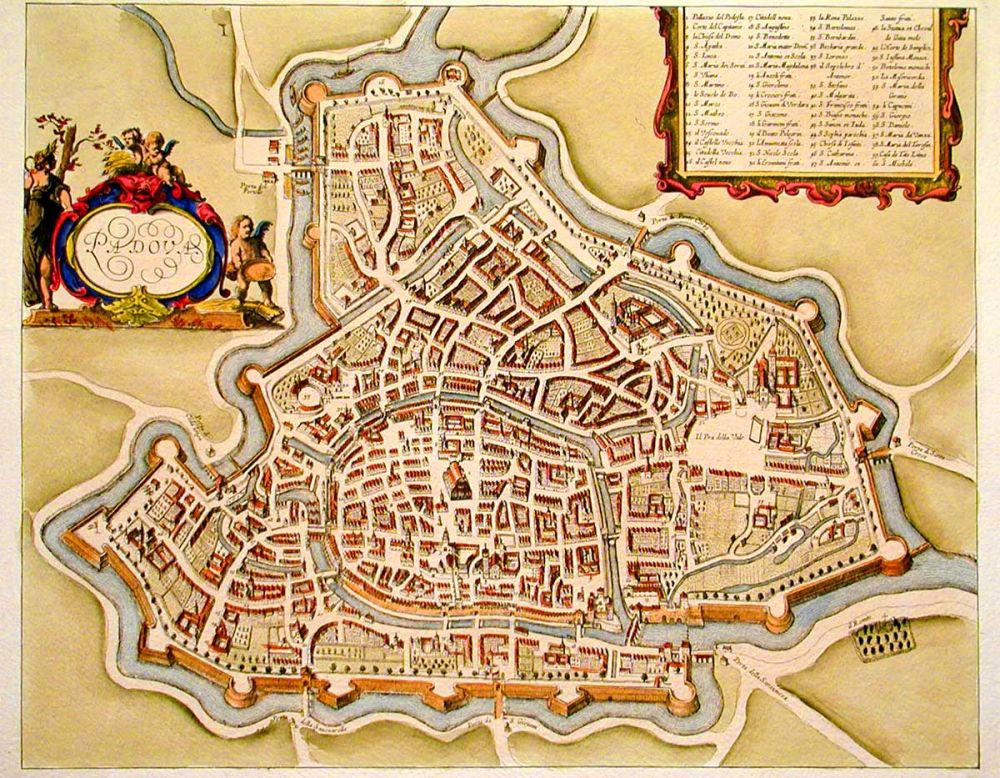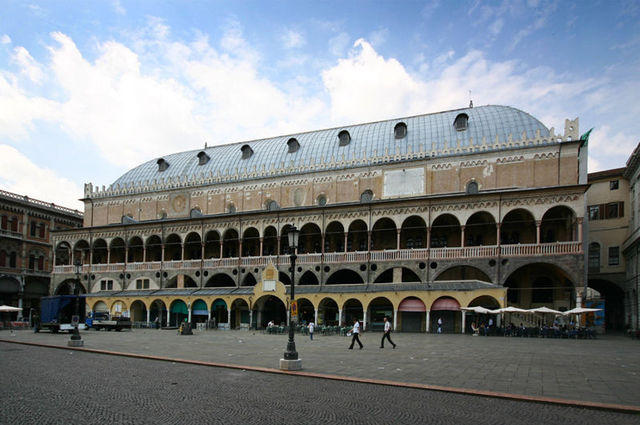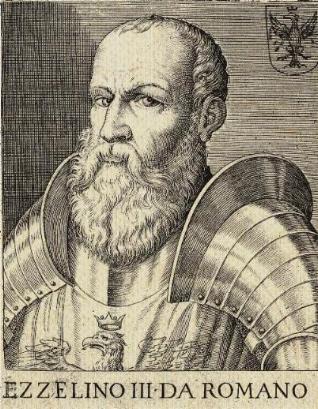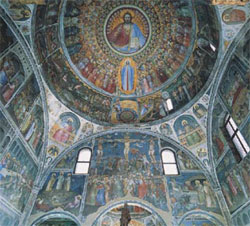|

Situated in the geographic centre of the Veneto region, Padua represents one of the most dynamic, culturally and economically alive cities in the Veneto region. Thanks to its geographic centrality and its numerous waterways, the Padua territory was occupied by man since ancient times, becoming in the 900s B.C. the cradle of the Paleo-Venetian civilization. During the Imperial age, Padua was established as one of the most important cities in Italy under the rule of Rome.
However, the territorial and economic growth of Padua and of its surrounding county actually began in the Middle Ages. Around 1000 AD, right after the latest ravages by invading peoples, the city began to repopulate. In 1049, Henry III granted Bishops the right to mint coins, and in 1089 Henry IV conferred to Bishop Milone control of the city. This initiated the slow ascent of the Commune: Padua had a forefront role in the victory of Legnano (1176) by the Lombard League, against Federico Barbarossa, and by the middle of the XII century, it had become one of the most important Communes in Italy.
During this period, land and fluvial communication ways were renovated, and the Paduan territory was treaded by pilgrims and travellers, in addition to merchants. In 1209 the cut of the Battaglia Canal, connecting the Euganean Hills with Padua, and of the Piovego Canal between Padua and Strà placed Padua in a well-connected location with the Euganean Hills and the rural areas, suppliers of raw materials, as well as with Venice and the lagoon. The Commune extended its authority over the entire territory, overpowering the feudal lords of the Este and the Montagnana fortresses, the last to surrender.
The 1200s was the century when the powerful Commune of Padua defined the real attributes of the town, and under many aspects it marked the beginning of a new era. It was during this period that the city experienced very important events: the building of Palazzo della Ragione,(photo), an imposing representation of the great power of the Commune and the old headquarters of the co urts of justice and of a covered market (1218); the establishment of the University (1222); the construction of the first city walls (1195-1210); the construction of hundreds of towers; the building of the grand Basilica dedicated to St. Anthony who died in Padua in 1231; the Scrovegni Chapel, masterpiece of Giotto in the early 1300s; and the flourishing of personalities like Pietro d'Abano, physician, philosopher and scientist who taught at the Sorbonne; Alberto Mussato, Frà Alberto da Padova, Marsilio da Padova, Lovato dei Lovati, etc. urts of justice and of a covered market (1218); the establishment of the University (1222); the construction of the first city walls (1195-1210); the construction of hundreds of towers; the building of the grand Basilica dedicated to St. Anthony who died in Padua in 1231; the Scrovegni Chapel, masterpiece of Giotto in the early 1300s; and the flourishing of personalities like Pietro d'Abano, physician, philosopher and scientist who taught at the Sorbonne; Alberto Mussato, Frà Alberto da Padova, Marsilio da Padova, Lovato dei Lovati, etc.
In the countryside th e religious orders flourished, beginning with the Benedictines who implemented a large-scale plan of land reclamation in the Saccisica district. The Franciscan and the Dominican Orders settled in the city. Their presence is testified by the numerous churches, by the old abbeys and the sanctuaries still existing in the city as well throughout the county. e religious orders flourished, beginning with the Benedictines who implemented a large-scale plan of land reclamation in the Saccisica district. The Franciscan and the Dominican Orders settled in the city. Their presence is testified by the numerous churches, by the old abbeys and the sanctuaries still existing in the city as well throughout the county.
The fortune of Padua as a Commune was effectively due to the trading of the products and produce of its countryside. But the rivalry between the landed aristocracy of Padua countryside and the merchant aristocracy settled in the city caused an internal division, which exploding, led to the descent of Frederick II in Italy. The families of the landed aristocracy sided against the Deputy of the Emperor, Ezzelino III Da Romano, who was supported instead by the city nobles. Open war led to the victory of Ezzelino who governed Padua from 1239 to 1259, when he was defeated at Cassano D'Adda by the Estensi. All the political offices of the Commune were then entrusted to the merchants and the representatives of the families. During this period, the Paduan economy was based almost entirely on wool working. The influx of foreigners led to a huge expansion of the city. During this phase of great economic flourishing and mercantile expansion, relations with Florence were intensified. This can be seen by the presence of a true community of Tuscan merchants and bankers, which also drew the presence of remarkable artists and intellectuals from Tuscany, and of Giotto most notably.
A more stable reunification was achieved during the course of the 14th century, with the rise of the da Carrara family who governed Padua and its territories for almost a century, stimulating an extraordinary artistic and cultural growth (Giusto de' Menabuoi, Jacopo d'Avanzo, Altichiero da Zevio, Giovanni Pisano, Francesco Petrarch, Giovanni Dondi dall'Orologio, etc.) and the political-milit ary power in the entire area of central Veneto. The Carraras aimed at forming a great regional state, an objective that soon brought them in collision with the expansion endeavours of Venice on the mainland. The attention of the Carraras, however, was not aimed at external expansion only: their construction activities were intense, including the building of their magnificent royal palace (no longer in existence, and partially incorporated in other historical buildings) that could rival the most powerful palaces of the European courts; the extension of the walls surrounding Padua; and the building of fortifications in the area (the Castles of Monselice and Este, the walls of Montagnana, reinforcement of the walls of Cittadella). The Carrara court was also open to writers, poets and scientists, and focused particular attention on the university where eminent professors were invited to teach. The maximum splendour of the Signory was achieved by Francesco il Vecchio, whose wife, Fina Buzzaccarini was a patroness of the arts. She had the Chiesa dei Servi built and, most importantly, appointed Giusto de' Menabuoi as court painter to fresco the Baptistery of the Duomo cathedral. ary power in the entire area of central Veneto. The Carraras aimed at forming a great regional state, an objective that soon brought them in collision with the expansion endeavours of Venice on the mainland. The attention of the Carraras, however, was not aimed at external expansion only: their construction activities were intense, including the building of their magnificent royal palace (no longer in existence, and partially incorporated in other historical buildings) that could rival the most powerful palaces of the European courts; the extension of the walls surrounding Padua; and the building of fortifications in the area (the Castles of Monselice and Este, the walls of Montagnana, reinforcement of the walls of Cittadella). The Carrara court was also open to writers, poets and scientists, and focused particular attention on the university where eminent professors were invited to teach. The maximum splendour of the Signory was achieved by Francesco il Vecchio, whose wife, Fina Buzzaccarini was a patroness of the arts. She had the Chiesa dei Servi built and, most importantly, appointed Giusto de' Menabuoi as court painter to fresco the Baptistery of the Duomo cathedral.
In addition, numerous castles, monasteries and abbeys date back to the 14th century, including the definitive composition of the walled cities that still characterize the south and north of the county, the result of intense struggles and territorial conflicts between the da Carrara family and the lords of Visconti and della Scala, and with the Serenissima Republic of Venice.
The ultimate clash with Venice determined, in 1405, the annihilation of the Carraras and the end of the independence of Padua. In 1406 all of the Paduan territory was annexed to the Republic of St. Mark.
|